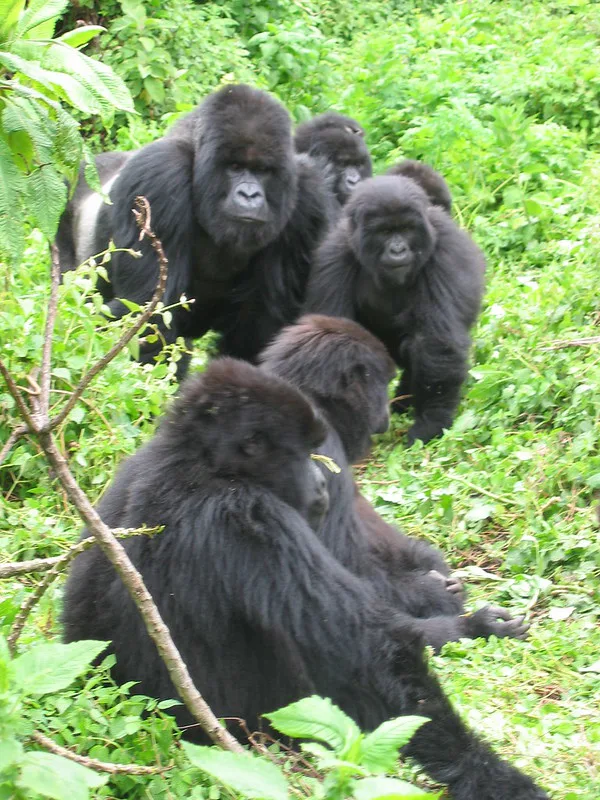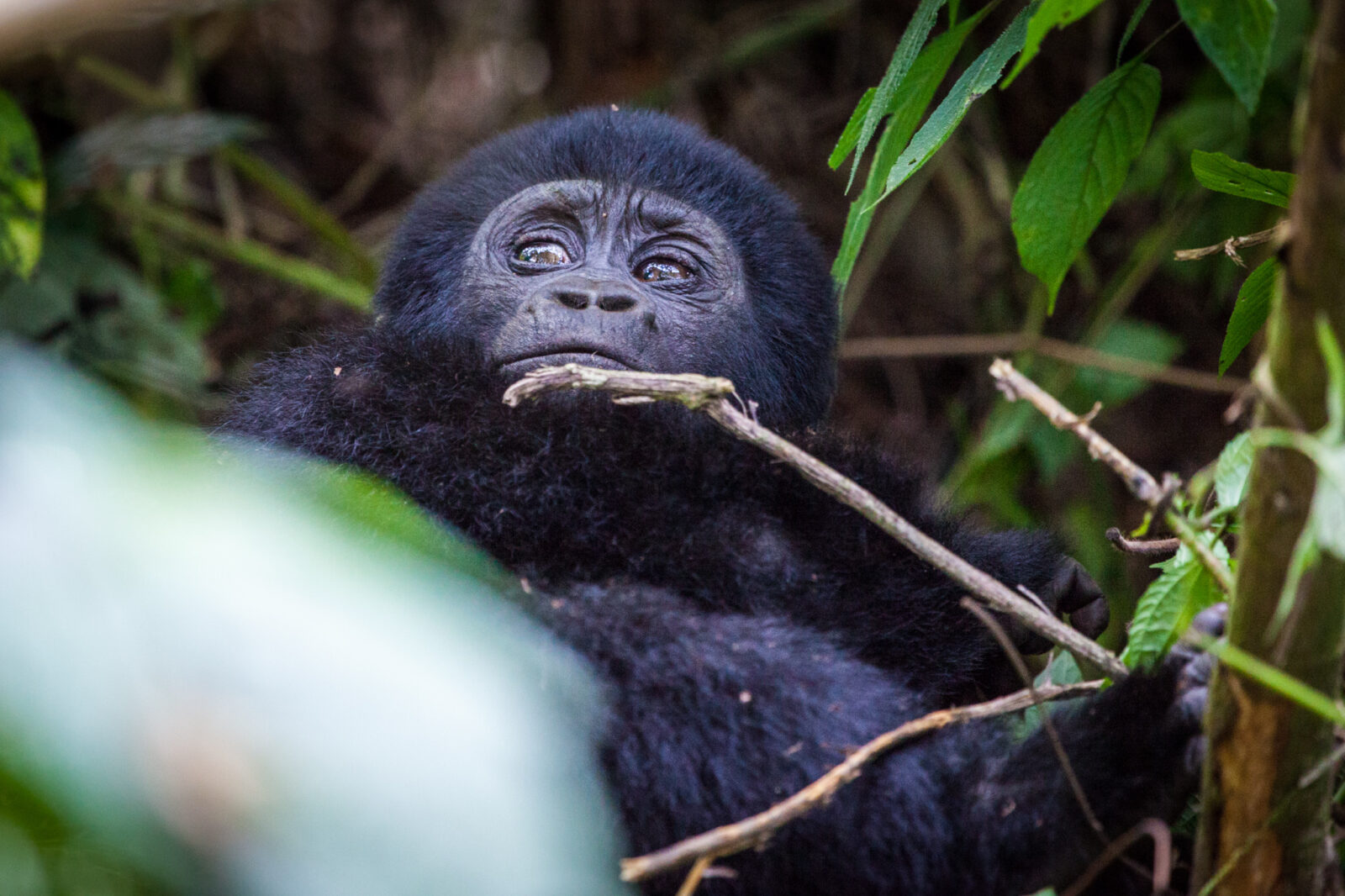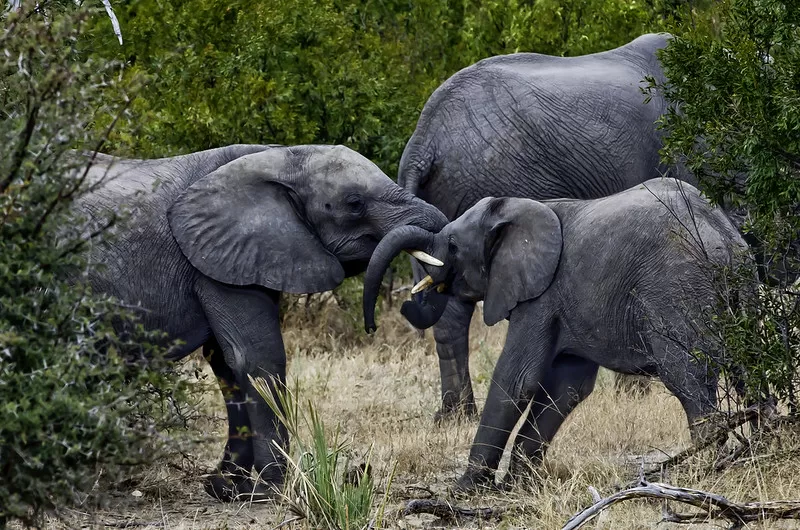Gorillas by the Numbers – Gorilla trekking safaris.
The death of MWEZA has down the Virunga count by one. More gorillas have succumbed to poachers than what? Five years previously, the latest census revealed how many had been born. Still among us are how many? These were some of the most fundamental issues Bill’s census was expected to respond to.
The February census of Mount Karisimbi discovered just fifteen gorillas in two groups, disrupted by malaria. Given karisimbi’s great size and plenty of habitat, this was somewhat disheartening. The gorilla rich core region of Mount Visoke came next as a target.
The two primary study groups were well-known for their makeup, but first we had to verify the count of the three periphery groups around Karaoke before discussing the absolutely unhabituated population. Though they sometimes interacted with groups 4 and 5, these families were not regularly tracked.
Bill would typically set out with a tracker to follow and identify the group, therefore confirming the presence or absence of the female in issue. If these contacts entailed a transfer of a female, as in the instance of Liza, For the census, however, we had to pay more attention to group numbers and composition—more exacting.
Among the gorilla big success stories is Nunkie. In 1972, he initially showed up on the northern Viscose slopes as a lone silverback. Over the following five years he settles in a tiny region of jagged terrain nearly exactly above the research camp, just between the bigger home ranges of group 4 and 5.
Nunkie appeared to make up for in personal charm, whatever his luck in preferred environment. He had attracted at least four women as of 1978; two from group 4 and his very loud copulatory binges were well-documented. So were three little babies.
By claiming a less desirable range near the top limit of the forest zone, Nunkie appeared to have guaranteed his spot on the mountain. He had little access to the good bamboo stands at lower altitudes as he almost ever descended below ten thousand feet. His home range of steep slopes and ravines offered safety, but also plenty of food sources of celery, thistles nettles, and large clusters of favorite Vernonia plants.
Approaching Nunkia’s gang in 1978 was usually quite an experience. Bill never knew who he would encounter first; a calm female like Papoose or Petula —transfers from group 4 who would accept his near presence – or a barely habituated transfer from a fully wild group; he was climbing over some peak or into a rocky cleft.
If the latter, her cries were clearly a quick reaction to Nunke. He would soon show out in great full swagger, pursing his lips and slapping at any surrounding plants as he turned his attention first to one side, then the other and crashed through the thicket. Nunke has never found tranquility with white apes around.

Bill was lucky to first meet Papoose and her two-year-old daughter as well as a neighboring group 6 transfer, Pandora, for the census. He sat in relative peace in their company and counted eight people total—including an only slightly offended Nunkie.
Completing the census, however, meant leaving the family to conduct at least three consecutive nest counts. Only in this fashion did we get the most precise count possible because to numerous beneficial features of mountain gorilla behavior and biology.
Gorillas spend each night at a new site as they travel around their range. Every one of these places, every gorilla over the age of three to three and a half creates their own “nest” by sloppily arranging a bowl-shaped sleeping platform from leaves, vines and branches. Up until the next baby is born, or until three years of age, infants sleep in their mothers’ nest.
Even more conveniently, mountain gorillas often defecate at the bottom of their nests late at night or early in the morning. The dry, heated dung is said to provide further protection from the evening cold. For census officials, this produces a repository of data. Their much more abundant presence in the nest of white and gray hairs helps one to easily identify silver backs from their excrement.
Relative dung size allows one to pretty precisely estimate the age of sub adults ranging in six months to eight years old. Adults may also be distinguished from one another as the presence of both baby and adult excrement in a nest suggests that the adult is female rather than an immature male.
Regarding Nunkie’s group, this data offers clear, recurring counts of eight individuals, one silver back, four females, and three babies. Two repeat trips to the group failed to provide visible proof of a recently born child who may not yet make solid excrement. Nunkie had done rather well indeed.
Another outlying group occupying a similarly difficult terrain on the Eastern slopes of Visoke was the objective for the next census. While Brutus was only known as kali-nasty, Nunkie had a reputation as Nguvu strong group 6’s silver back.
Once Pablo’s mother Liza moved to his band from group 5, Bill had seen a restless Brutus once again.Bill would find personally exactly how vicious he could be at later date, but his interaction with May 27 as noted in his field notes was sufficient to support accepted knowledge.
Arriving over a little elevation at 11.45, one fined Brutus five meters distant. Twice he yells and withdraws down a bush tunnel. Group members are heard tumbling down the hill beyond.
Brutus wraagh at eleven; fifty….Brutus yells and dashes to 4m as I approach the tunnel at 11.54, thinking he has followed others.This is repeated at 11:57, then stopped with a sweeping vege swat inside 2.5 meters. I withdraw and wait for proof that Brutus is no longer watching the other end of the tunnel. At 15:15 I crawl through without incident.
Bill’s connection with Brutus during the following two years was to revolve around tunnels on a regular basis. That day, his company crossed the valley under the young silver back and slept peacefully in plain view on the other side for more than an hour. After making a visual contact and then verifying a total of eight via a series of nest counts, Bill counted six.
Based on Ian Redmond’s previous count four months ago, this was a drop of three adults at least two of them female. Such a loss via natural transfers might at least help to explain Brutus’s disturbed condition. It also sparked questions about poaching kills in a home range near to human communities outside the park.
Bill went on to the final peripheral contact the day after completion of the group 6 nests. Karisoke researchers had known peanuts for many years initially as black back in the now split Rafiki group, then as head of his own group with many females.
Peanut lost terribly in a battle with another silver back in late 1977; he abducted his daughters and left him so gravely injured that Dian thought he would die. He survived, nevertheless, and continued on his solo patrols on Visoke’s lower slopes, most certainly expecting to draw some girls once again. Bill went to peanuts on May 28 to find out if he had succeeded, maybe with some of the missing members of group 6.


